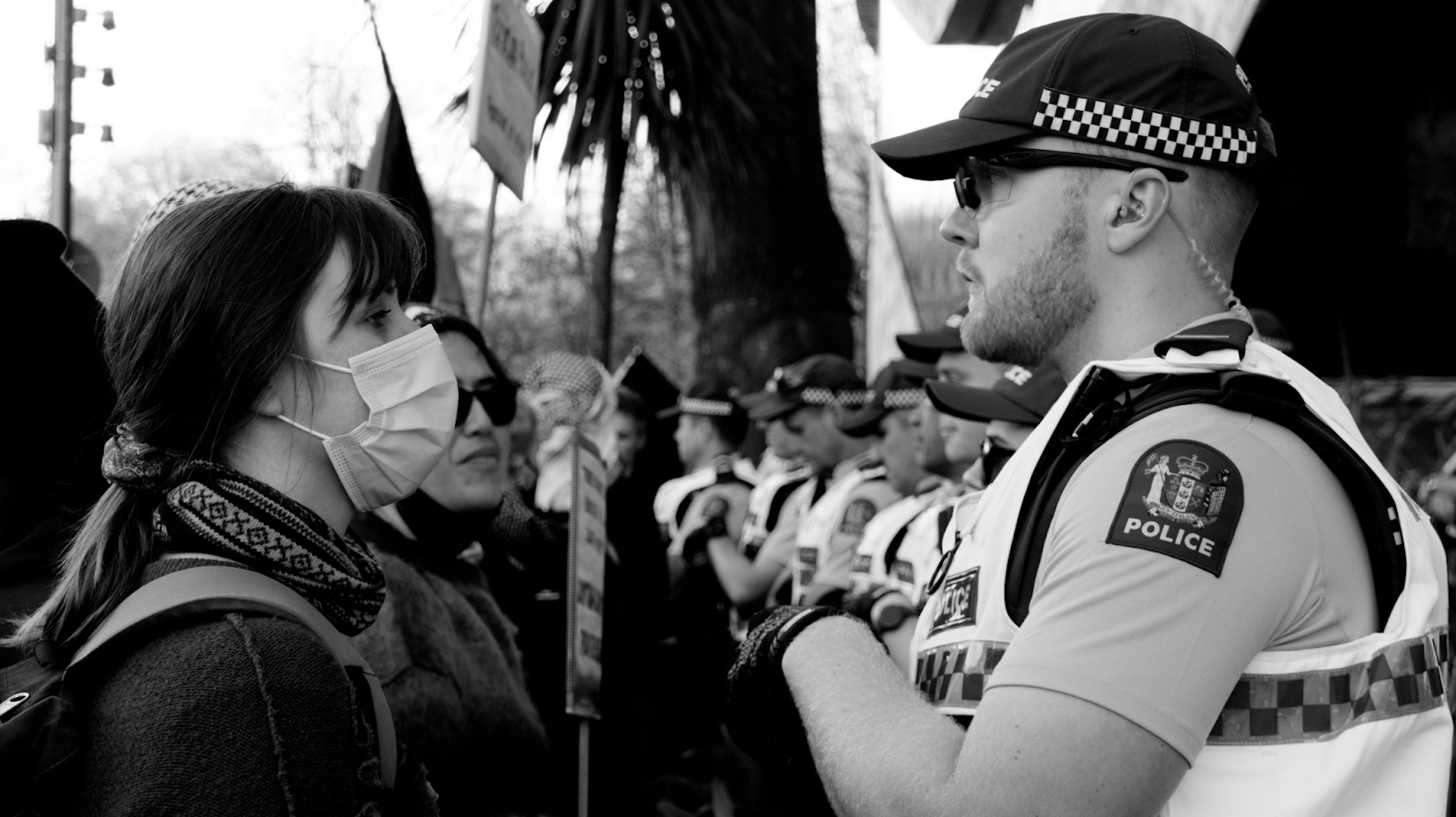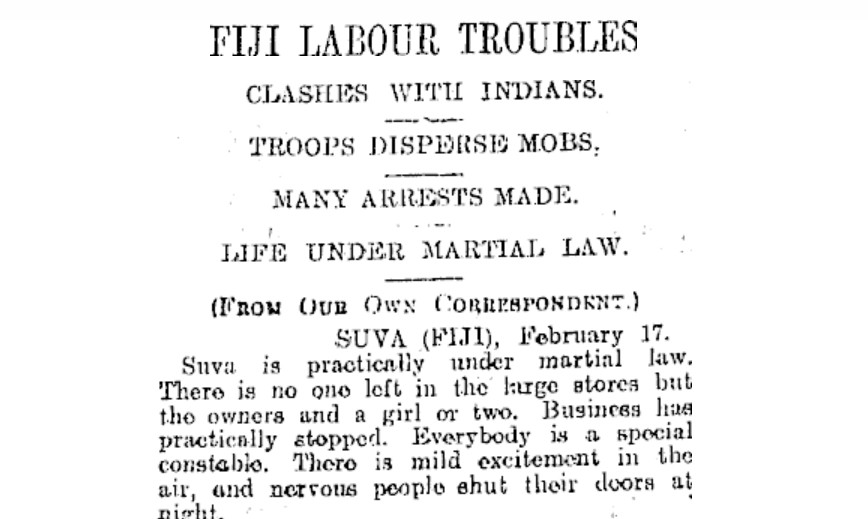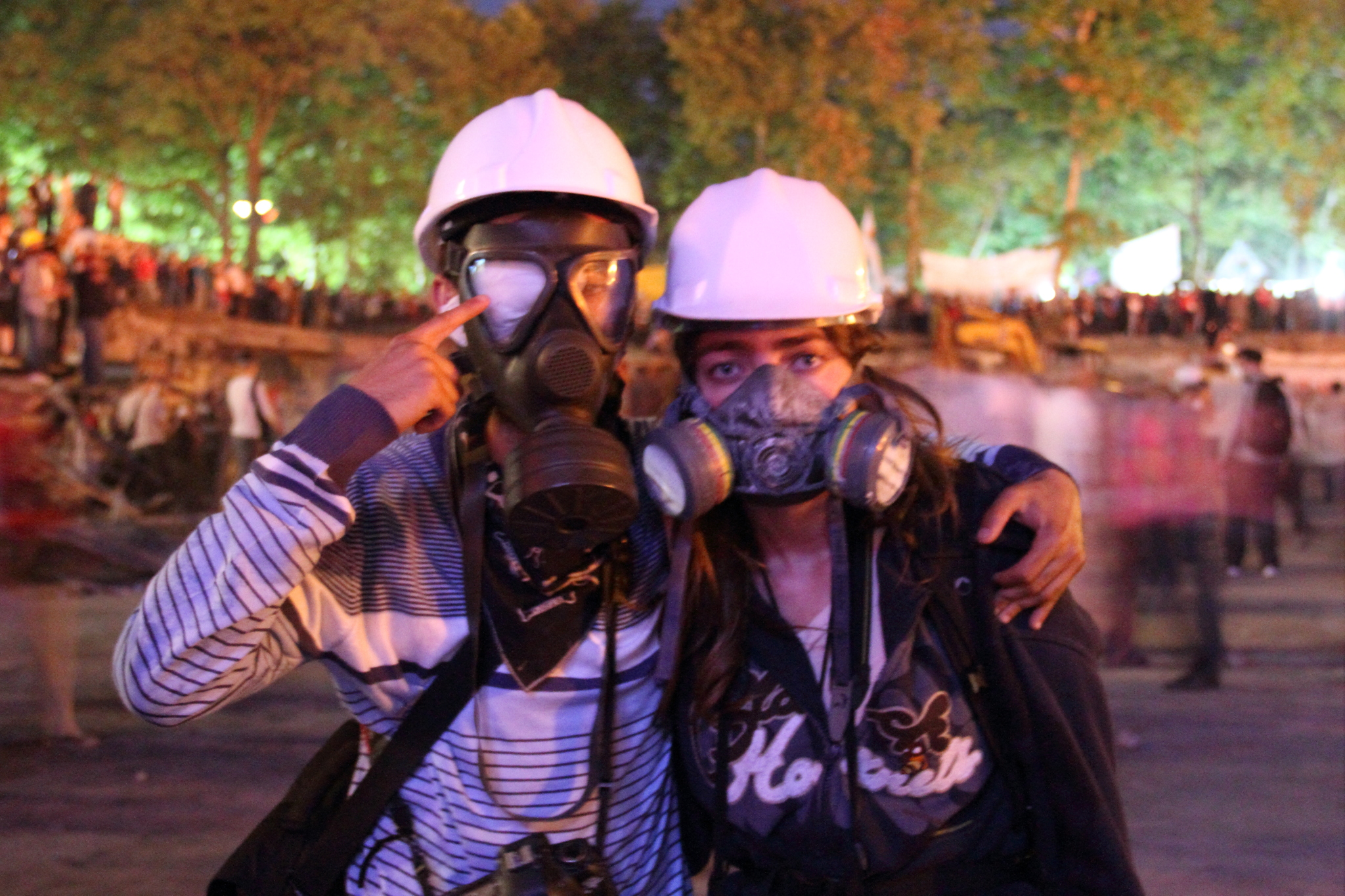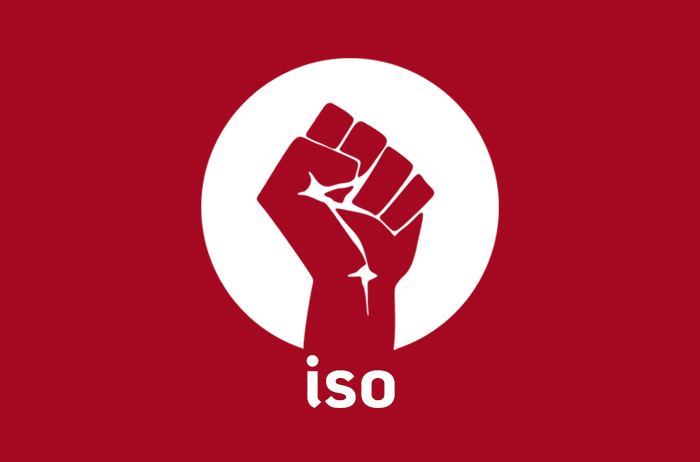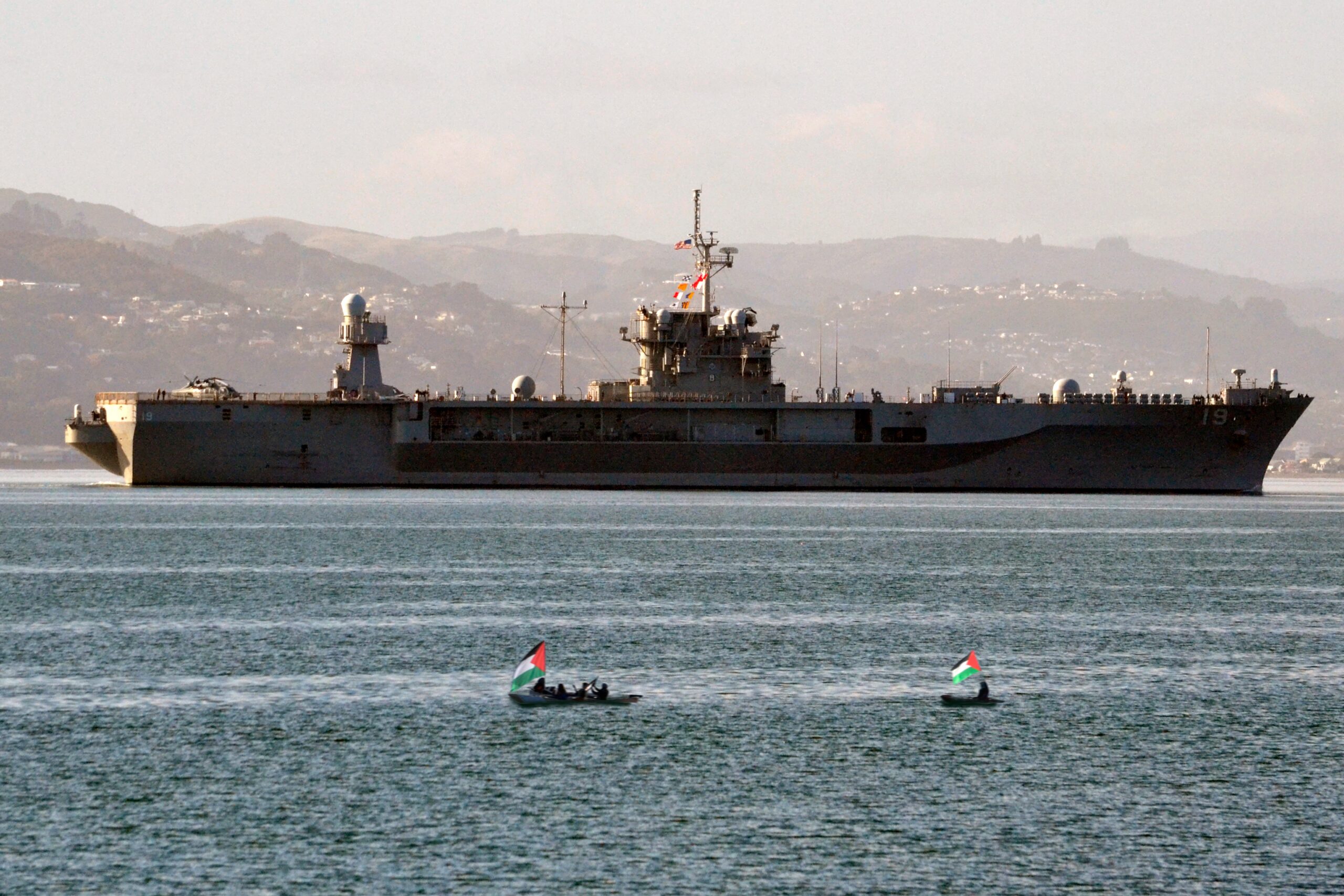Shomi Yoon gave this talk to the Wellington branch of the International Socialists on the anniversary of the bombing of Nagasaki.
Seventy years ago this month the US dropped the atomic bomb on Hiroshima and Nagasaki.
The bomb, a “destroyer of worlds” burnt hotter than the sun. The largely civilian victims were instantly vaporised, and the fires that burnt afterwards incinerated thousands more. The death toll for the two cities rests conservatively at 250,000 people.
The after effects of radiation killed even more people through a long and torturous process.
Chairman of the Joint Chiefs of Staff William Leahy wrote that the atomic bomb should not described as bombs or explosives but “a poisonous thing that kills people by its deadly radioactive reaction, more than by the explosive force it develops”.
Of course, attacks on a civilian population was nothing new in Japan during WWII. The firebombing of Tokyo caused just as many deaths if not more than Hiroshima and Nagasaki. In Tokyo, some 1000 fire bombs were dropped in a period of six hours. The fire that ravaged the largely wooden capital burned so hot that in the shallower Shitamachi working class suburbs the canals where people gathered to escape the flames, the water boiled.
What made the atomic bomb different from these earlier indiscriminate attacks on civilians was the fact that only one bomb was necessary to accomplish the utter destruction.
This meant that one plane and a handful of soldiers could devastate an entire city, as opposed to the more than 300 planes it took to carry out the Tokyo slaughter.
The overwhelming majority of those killed and incinerated with the bombing were civilians. Survivors like Michie Hattori was a school girl of 15 at the time of the bombing. Survivors like Hattori have been brave enough to speak about her trauma again and again to serve as a warning for future generations – not an easy feat as survivors faced discrimination immediately after the bombing as there was confusion as to how radiation poisoning spread. Here’s her recounting the horror in the immediate aftermath of the bombing.
Fires started all around us. Flames leaped from paper and wood scraps, some from collapsed structures. Thick smoke and dust filled the air. The fires gave the only real illumination. Even the noontime sunlight, filtering through the clouds, darkened. The word I kept hearing the girls say, jigoku, means hell. That’s the closest I ever want to come to jigoku.
‘Let’s go back to the school. It’s only a couple hundred meters,’ one of the classmates suggested. We traveled slowly because each step caused pain. Our thoughts were that a bomb must have gone off near the shelter and burned a short distance around us. We didn’t even dream what devastation covered our entire city.
The route to the school seemed strangely flat and empty. Someone asked, ‘Weren’t there houses here when we came to the shelter?’ The whole world appeared so surreal we just accepted that structures could disappear off the face of the earth. We were living a terrible nightmare.
My classmate Fumiko scampered about 50 meters ahead of us. When I looked up to see why she was calling, I saw her pointing to a large form on the ground.
‘Look over there,’ she shouted. ‘It has escaped from the zoo. It’s an alligator.’ It lay in our path to the school, so we approached with caution. Fumiko found a rock.
She drew back the rock above her head as she approached the creature. Then, Fumiko froze in her tracks, screaming hysterically. I ran to her side. The face looking up at us from the crawling creature was human. The shrieking in my ear kept me from hearing what the face was trying to say. I could just see it pleading for something — probably water. No clothes or hair were visible, just large, gray scalelike burns covering its head and body. The skin around its eyes had burned away, leaving the eyeballs, huge and terrifying. Whether male or female I never found out.
The head fell forward — face in the dirt. It didn’t move after that. Fumiko crumbled to the ground and I dropped beside her.
There are hundreds of eye witness accounts that talk of that instant when the world turned to a raging hell. Each survivor’s story is different in their circumstances, their observations, and feelings. But what remains the same is their sense of the mundane everyday being brutally ruptured by a piercing light and heat and destruction.
US President Harry Truman, who authorised the bombing, peddled the idea that Japan was a nation of ‘fanatics’ but in reality the bombs were dropped on ordinary war-weary civilians. The horror of the bombing is something that everyone acknowledges and leaders around the world repeat empty phrases of ‘never again’. We need to look further than the horror and ask why this happened in the first place. Why did the US to drop a bomb?
There’s a few myths that get repeated when this question gets raised. In my mind these myths should have laid put to rest two decades ago by historians like Gar Alperovitz and Ronald Takaki who have painstakingly researched the correspondence and evidence from the declassified documents.
Despite their research these myths around the necessity of the bomb remains:
- That the bomb was necessary to save lives.
And connected to this is the myth that,
- That the bomb was necessary to speed up Japanese surrender.
Was the bomb necessary to save lives?
“Half a million American lives” was the number that Truman quoted as the number of lives saved. Why? Because according to Truman, Japan was a country full of “savages”. They were a “ruthless, merciless, and fanatic” people so loyal to the emperor that every man, woman, and child would fight to the bitter end.
To repeat Truman’s justification 70 years after the bombing gives credence to this offensively racist argument: that US military personnel are worth more than Japanese civilian lives. Moreover, not only is it racist – it’s factually wrong.
In June 1945, the Joint War Plan Committee provided an estimate of 40,000 US lives may be lost if the US were to conduct a ground invasion. This falls well short of Truman’s “half a million”. But even this 40,000 is based on the dubious assumption that Japan could continue to feed, fuel, and arm its troops while the U.S. had almost complete control of the seas and skies.
What about the bomb being used to hasten an end to the war? Was it necessary?
Truman went against his own generals to drop the bombs. In fact, six of the seven five-star generals and admirals of that time believed that there was no reason to use the bombs. They thought the Japanese were already defeated, knew it. And that they were likely to surrender before any American invasion could be launched.
Here’s how Dwight D. Eisenhower, Supreme Commander of the Allied Expeditionary Force and later president of the U.S., responded:
I voiced my misgivings, first on the basis of my belief that Japan was already defeated and that dropping the bomb was completely unnecessary, and secondly because I thought that our country should avoid shocking world opinion by the use of a weapon whose employment was, I thought, no longer mandatory as a measure to save American lives. It was my belief that Japan was, at that very moment, seeking some way to surrender with a minimum loss of “face.”
In his autobiography, Admiral William D. Leahy, Chief of Staff to Presidents Franklin D. Roosevelt and Truman, states:
It is my opinion that the use of this barbarous weapon at Hiroshima and Nagasaki was of no material assistance in our war against Japan. The Japanese were already defeated and ready to surrender because of the effective sea blockade and the successful bombing with conventional weapons.
Even General Douglas MacArthur, the supreme commander of the Allied forces in the Pacific, considered the bomb “completely unnecessary” from a military point of view because he believed that the Japanese were practically defeated. One month before the bombing, he had prepared his staff for the Japanese surrender and subsequent occupation when he’d learnt of Japan asking Russia to negotiate a surrender with the US.
Eisenhower, Leahy, and MacArthur, had all advised Truman to drop his demand for “unconditional surrender” and allow Japan to keep the emperor. An alteration in peace terms that might have led to an almost immediate surrender. Truman rejected that advice. Only to turn around and grant the retention of the emperor after the nuclear bombing.
What about from Japan’s end? Did the nuclear attacks actually hasten their surrender?
This is the common myth that’s accepted by many. However, as Tsuyoshi Hasegawa, professor of modern Russian and Soviet history, argues, the timing is all wrong. Hasegawa followed the timeline of cabinet
discussions and telegrams between Foreign Minister Togo Shigenori and the emperor between August 6 (when the bomb was dropped on Hiroshima) and August 10 when Japan indicated surrendered unconditionally. According to Hasegawa, what “decisively changed the views of the Japanese ruling elite was the Soviet entry into the war. It catapulted the Japanese government into taking immediate action. For the first time, it forced the government squarely to confront the issue of whether it should accept the Potsdam terms”.
August 6 and 9 were when the bombs were dropped but it was August 9 when the Supreme Council met – this was first time this Council since the beginning of the war to discuss unconditional surrender. Moreover, Tokyo did not receive the full report of the bombing of Hiroshima until August 10.
Attacks on civilians were nothing new for the Japanese ruling class. If anything they showed a callous acceptance of these and expected civilians to get used to these attacks.
It’s clear that the argument that it hastened surrender is wrong from both the Japan and US perspective. Japan wanted to surrender before the bombing on the condition that it maintain the emperor – a condition that Truman rejected only to turn around and accept after Japan’s surrender. Truman had no problem with a class system based on the emperor – his priorities were now with the oncoming war with Russia.
Imperialism and the bomb
This is where it’s important to put the bombing in the context of imperialism. Part of Truman’s motivation for dropping the bombs involved not defeating Japanese, but giving a strong signal to the ascending Soviet Union.
With the U.S.S.R. pledged to enter the war against Japan on August 8, 1945 (which it did), Truman worried that prolonging hostilities might allow the Soviets to claim a greater stake in East Asia. He and Secretary of State James Byrnes believed that a graphic demonstration of the power of the new bomb, then only in the possession of the United States, might also make that Communist power more “manageable” in Europe.
In other words, the bombing was more about managing Russia and the oncoming Cold War.
Imperialism and gaining dominance and control of the region over Russia was at the heart of Truman’s motivation. The US generals’ misgivings over the use of the bomb was also reflected by the scientists involved in the Manhattan Project, the atomic bomb development team. These misgivings were also evident in wider US society too. US socialist James P Cannon, lambasted US imperialism in a speech just a few weeks the attacks:
“This is how American imperialism is bringing civilisation to the Orient. What an unspeakable atrocity!”
Elsewhere he goes on to say:
“They gained control of the boundless riches of the Orient. They gained the power to exploit and enslave hundreds of millions of people in the Far East. And that is what they went to war for—not for moral position, but for profit.”
And it is this wider context that must be considered to make any sense of the bomb.
As US socialist Mikki Smith argued in an article written for the 55th anniversary of the bomb,
“If Russia entered the war against Japan as the Allies had planned or, alternatively, if they were to broker the peace with Japan, as Japan had implored them to do, then Russia would have a greater hold on Asia–which the U.S. did not want. This situation provided a major incentive to bring an end to the war before August 15, the date on which Russia was set to declare war on Japan, and also to do so in such a way as to strengthen the U.S. position after the war”.
It is in this context that the logic behind the decision to incinerate Hiroshima and Nagasaki become terrifyingly clear.
Far from saving lives or ending the war sooner, it was for imperialistic reasons the US dropped the bomb. The bomb served as a warning and the first act of the Cold War against its imperialist rival Russia. A message to the Russians of the power of destruction and technological military capability that the US had managed to develop.
What about today?
Since the bombs were dropped 70 years ago, the world has suffered greatly. As awesome as the Hiroshima bomb was, the nuclear weapons that the US owns now make the bombs in Hiroshima and Nagasaki seem like child’s play. Thousands of people have been killed or wounded from various nuclear accidents and radiation experiments.
Japan’s own Fukushima nuclear meltdown after the tsunami almost four years ago reminds us of the ongoing dangers of nuclear power.
And, while the Cold War era is over, imperialism still remains. US president Barack Obama’s defence policy – the ‘Pivot to Asia’ – is an indication of the new phase of imperialism. The US are encircling China militarily and economically. The free trade agreement Trans Pacific Partnership needs to be seen in this imperialist light too. It’s a way of locking China out.
Real peace
The memorial of the atomic bombing 70 years later – from the ruling class perspective – stinks of hypocrisy from the highest levels. While lamenting the tragedy and horror – all sides are careful not to talk about anything more.
In Wellington, the Green Mayor Celia Wade Brown can claim to be the leader of a city of Peace and support the abolition of nuclear weapons while at the same time hosting a weapons conference later on in November. A conference whose principal sponsor is Lockheed Martin, the world’s largest producer of weapons and maker of the Trident D5 nuclear missiles.
In Japan, Prime Minister Shinzo Abe, can lament the loss of those lives lost in Hiroshima but refuse to acknowledge the atrocities imperial Japan committed in China, Korea, and other Asian countries. Against mounting protest and anger, his Liberal Democratic Party has recently changed the peace constitution, to allow the self-defence force to become similar to a standing army. Previously, the official line was that the self-defence force was only able to be used in self-defence.
But perhaps the biggest hypocrisy comes from the US itself – the most militarised country in the world, with the biggest nuclear arsenal in the world; the only country to have used the bomb on a civilian population. US imperialism has the audacity to claim that other countries like North Korea or Iran cannot be trusted.
The fact that president Obama was granted a Nobel peace prize for his fine speeches makes this hypocrisy all the more galling. Under his leadership, he has continued to develop the deadly B61-12 nuclear bomb. Far from being a deterrent, these new weapons allow tactical guidance systems, complex Boeing-designed tail kits, and a control to vary the power of the blast.
There is an alternative to this hypocrisy. There is an alternative to this barbarism that we’ve witnessed for the past 70 years. And that alternative involves not letting the rulers define the contours of peace. It’s one where ordinary working people’s lives and needs are put at the front and centre as opposed to the needs of profits and capitalism. A system that pours billions into food, clothing, housing, educating ordinary people rather than into the arms economy. Peace in the true sense of the word not the hypocrisy that we’re forced to swallow by our current rulers.
We saw the promise of this kind of peace last time in the 60s and 70s when the US war machine was ground to a halt not because of peace-loving presidents but because of the movements from below. Heroic resistance of the Vietnamese people, the radical social movements that erupted in the US itself against war and imperialism, and crucially the resistance of the US troops themselves – refusing orders to fight. Because of these movements the US was too terrified to laun ch major ground troops for the next two decades.
The bombing of Hiroshima and Nagasaki show us this system at its worst. The resilience of ordinary people in the years after the war and the movements of ordinary people against war show us what a better world could involve.


